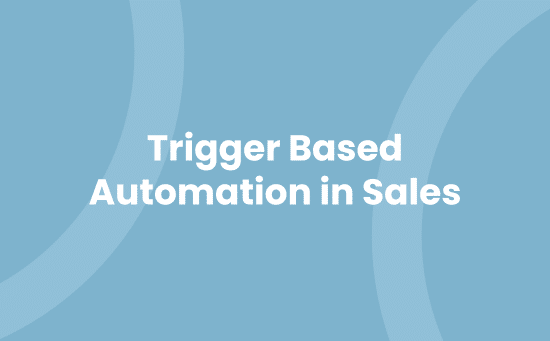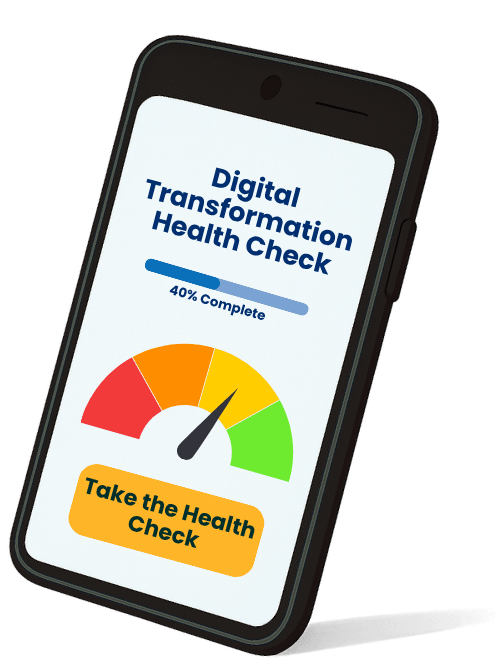Picture your sales team spending countless hours on repetitive tasks, manually following up with leads and updating records. It’s like watching skilled hunters meticulously setting individual traps when they could be commanding an entire automated hunting system. Trigger-based automation in sales transforms this laborious process into a streamlined operation that captures opportunities at precisely the right moment.
Think of it as your personal sales assistant working 24/7, instantly responding to customer behaviours and taking action when specific conditions are met. Whether it’s a prospect downloading your whitepaper or a client’s subscription reaching its renewal date, automated triggers ensure you’re always one step ahead. You’ll cut response times from hours to seconds while delivering perfectly timed, personalised interactions that convert more leads into loyal customers.
What Is Trigger-Based Automation in Sales
Trigger-based automation in sales operates as a responsive system that executes predefined actions based on specific customer behaviours or events. This automated approach monitors customer interactions across multiple touchpoints to initiate targeted sales processes automatically.
Key Components of Sales Triggers
Sales triggers comprise three essential elements that work together to create an effective automated response system:
1. Event Monitoring
- Digital footprint tracking (website visits, email opens, form submissions)
- Customer relationship management (CRM) data changes
- Purchase history analysis
- Social media engagement metrics
2. Conditional Logic
- IF-THEN rule structures
- Multi-condition frameworks
- Time-based parameters
- Scoring thresholds
3. Action Execution
- Email sequence activation
- Task assignment to sales representatives
- CRM record updates
- Lead qualification processes
Types of Sales Triggers
Sales triggers categorise into behavioural, demographic and engagement-based actions:
Behavioural Triggers
- Website page visits
- Product demo requests
- Cart abandonment
- Document downloads
Demographic Triggers
- Company size changes
- Budget alterations
- Industry shifts
- Location updates
Engagement Triggers
- Email interaction patterns
- Social media engagement
- Meeting attendance
- Service usage metrics
Each trigger type connects to specific automation workflows, creating personalised customer journeys based on real-time data analysis.
Benefits of Automated Sales Triggers
Automated sales triggers transform traditional sales processes into dynamic, data-driven workflows that enhance operational efficiency by 30%. These intelligent systems create immediate responses to specific customer actions while maintaining personalised interactions at scale.
Improved Lead Response Time
Automated triggers accelerate lead response times by instantly initiating contact when prospects demonstrate buying signals. McKinsey’s research confirms that companies implementing sales automation reduce response delays by eliminating manual monitoring tasks. Here’s how automated triggers optimise lead response:
- Instant Notifications: Alerts sales teams immediately when high-value prospects interact with critical touchpoints
- Prioritised Actions: Automatically segments leads based on engagement levels ensuring focus on qualified opportunities
- Automated Follow-ups: Executes pre-defined sequences for consistent communication without delays
- Cross-channel Monitoring: Tracks prospect activities across multiple platforms simultaneously
- Real-time Qualification: Scores leads automatically based on behavioural patterns decisions
Enhanced Customer Journey Mapping
AI-driven sales triggers create detailed maps of customer interactions by collecting behavioural data across various touchpoints. This systematic approach enables precise tracking of customer progression through the sales funnel. Key mapping capabilities include:
- Behaviour Tracking: Records specific actions like website visits document downloads portal logins
- Engagement Analysis: Measures interaction frequency duration depth across channels
- Journey Visualisation: Creates visual representations of customer paths through sales stages
- Conversion Point Identification: Pinpoints exact moments when prospects become customers
- Touchpoint Attribution: Assigns value to different interaction points in the sales process
Learn more about business automation solutions
Essential Sales Automation Triggers
Trigger-based automation in sales creates dynamic responses to specific customer actions providing personalised experiences at scale. These triggers monitor customer interactions across various touchpoints initiating targeted sales processes automatically.
Website Behaviour Triggers
Website behaviour triggers activate automated responses based on visitor interactions with your digital platforms. Tracking specific page visits particularly pricing pages signals buying intent enabling immediate engagement opportunities. When prospects spend more than 3 minutes reviewing product features or return to the same service page multiple times the system initiates targeted follow-up sequences.
Key website behaviours to monitor:
- Multiple visits to pricing pages [internal link: /pricing]
- Time spent on product documentation
- Demo request form interactions
- Resource downloads
- Chat engagement patterns
Email Engagement Triggers
Email engagement triggers transform standard communications into interactive touchpoints that generate valuable customer insights. These triggers monitor opens clicks reply rates creating automated workflows based on recipient behaviour.
Common email engagement metrics:
| Metric | Trigger Point | Automated Action |
|---|---|---|
| Open Rate | 3+ opens | Send follow-up content |
| Click Rate | 2+ link clicks | Schedule sales call |
| Reply Time | Within 24 hours | Priority lead status |
| Unsubscribe | Immediate | Update CRM record |
Purchase History Triggers
Purchase history triggers leverage past buying patterns to create personalised upsell cross-sell opportunities. These automated sequences analyse transaction data identifying optimal times for repeat purchases complementary product recommendations.
Purchase-based automation includes:
- Reorder reminders based on average purchase cycles
- Product bundle suggestions from previous purchases
- Loyalty programme activation at specific spend thresholds
- Service renewal notifications
- Customer milestone celebrations
Implementing Trigger-Based Sales Automation
Trigger-based sales automation transforms manual sales processes into responsive, data-driven workflows that execute predefined actions based on specific customer behaviours. This strategic implementation combines behavioural monitoring with automated responses to create seamless customer interactions.
Selecting the Right Automation Platform
Choosing an automation platform requires evaluating specific features that align with your sales objectives:
1. Integration Capabilities
- Native CRM compatibility
- API connectivity options
- Third-party tool synchronisation
2. Trigger Configuration Options
- Behavioural trigger settings
- Time-based automation rules
- Multi-channel response capabilities
3. Analytics and Reporting
- Real-time performance metrics
- A/B testing functionality
- ROI tracking dashboards
4. Scalability Features
- Custom workflow creation
- User permission controls
- Data storage capacity
Learn more about CRM integration options
Setting Up Custom Triggers
Custom triggers activate personalised responses based on specific customer actions:
1. Behavioural Triggers
- Website visits tracking
- Content download monitoring
- Product page interactions
- Cart abandonment alerts
2. Engagement-Based Actions
- Email open rates
- Click-through patterns
- Form submissions
- Social media interactions
3. Configuration Steps
- Define trigger conditions
- Set response parameters
- Create automation workflows
- Establish monitoring metrics
Explore advanced automation solutions
Each trigger connects to specific automation workflows that create personalised customer journeys based on real-time data analysis, enabling immediate responses to customer actions while maintaining personalised interactions at scale.
Measuring Success and ROI
Trigger-based automation in sales delivers measurable improvements in lead conversion rates performance metrics. Companies implementing marketing automation experience a 107% increase in lead conversion compared to non-automated processes.
Key Performance Metrics
Key metrics for measuring trigger-based automation success include:
Lead Conversion Rate
- Track the percentage of leads converting to customers
- Monitor conversion improvements across different trigger types
- Compare automated vs manual conversion performance
Customer Acquisition Cost (CAC)
- Calculate total marketing spend per acquired customer
- Measure reduction in acquisition costs through automation
- Compare CAC across various trigger campaigns
Revenue Generated
- Monitor revenue from automated trigger campaigns
- Track revenue growth from specific trigger types
- Measure ROI through revenue-to-cost ratios
Learn more about business automation solutions
Optimising Your Trigger Strategy
Enhance your trigger-based automation through these proven approaches:
Data Analysis
- Review trigger performance data weekly
- Identify high-performing trigger sequences
- Adjust triggers based on conversion patterns
A/B Testing
- Test different trigger conditions
- Experiment with timing sequences
- Compare messaging variations
Integration Optimisation
- Connect CRM data with trigger systems
- Synchronise customer touchpoint data
- Automate data flow between platforms
- Monitor trigger response rates
- Adjust timing thresholds
- Update trigger conditions based on results
Explore automation strategies
Trigger-based automation stands as a game-changing solution for modern sales teams. By implementing these intelligent systems you’ll transform your manual processes into streamlined workflows that respond instantly to customer actions.
The power of automated triggers lies in their ability to create personalised experiences while saving valuable time. Your sales team can focus on high-value activities while the system handles routine tasks with precision and consistency.
Take the first step towards sales automation today. Start small test your triggers and scale based on results. Remember, successful implementation isn’t just about technology – it’s about creating meaningful customer interactions that drive business growth.
Frequently Asked Questions
What is trigger-based sales automation?
Trigger-based sales automation is a system that automatically executes predefined actions based on specific customer behaviours or events. It acts like a virtual sales assistant that monitors customer interactions across various touchpoints and responds instantly when certain conditions are met, helping to streamline sales processes and reduce manual work.
How does trigger-based automation improve sales efficiency?
It improves efficiency by reducing response times, eliminating manual monitoring tasks, and automating repetitive actions. Research shows it can enhance operational efficiency by 30% whilst maintaining personalised customer interactions at scale. It also enables sales teams to focus on high-value activities rather than administrative tasks.
What are the main types of sales triggers?
Sales triggers fall into three main categories: behavioural triggers (based on customer actions), demographic triggers (based on customer characteristics), and engagement-based triggers (based on interaction patterns). These can include website visits, product demo requests, changes in company size, and email interaction patterns.
How do AI-driven sales triggers enhance customer journey mapping?
AI-driven triggers collect and analyse behavioural data across multiple touchpoints, enabling precise tracking of customer progression through the sales funnel. They provide insights through behaviour tracking, engagement analysis, journey visualisation, and conversion point identification, helping businesses understand customer interactions better.
What ROI can businesses expect from trigger-based automation?
Companies implementing trigger-based automation systems typically see a 107% increase in lead conversion rates compared to non-automated processes. The ROI can be measured through improved lead conversion rates, reduced customer acquisition costs (CAC), and increased revenue from automated campaigns.
How can businesses optimise their trigger-based automation strategy?
Businesses can optimise their trigger strategy through regular data analysis, A/B testing of different trigger conditions, and integration optimisation. It’s important to review performance metrics regularly, experiment with different trigger settings, and ensure proper synchronisation of customer touchpoint data.
What key features should businesses look for in an automation platform?
When selecting an automation platform, businesses should evaluate integration capabilities, trigger configuration options, analytics and reporting features, and scalability. The platform should also offer robust customisation options and support for creating personalised responses based on specific customer actions.
How does website behaviour tracking work in trigger-based automation?
Website behaviour tracking monitors visitor interactions such as page visits, time spent on specific pages, and interaction with content. When predefined conditions are met (like multiple visits to pricing pages), the system automatically triggers appropriate responses or notifications to the sales team.



